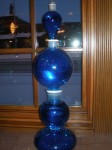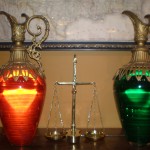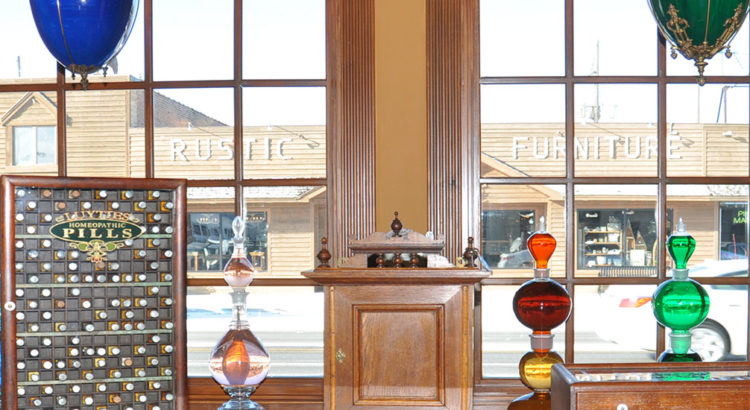Dramatically Modern Design
Show globes date back to 1665 and come in a variety of shapes and sizes, some have multiple tiers with separate chambers for different colored water, tapering to a finial at the top. Before large-scale glass manufacturing existed, show globes were hand blown, and etching was done by hand. With a good design eye and some imagination, you could hang a globe in a big front window of a modern house, hotel or storefront, focusing light on the sphere for nighttime illumination – creating a dramatic effect. Hanging show globes can be re – chained for bold design.
Of course, you can mix colors to make any color you want.
An Interesting History Behind Your New Decor…

Many experts believe show globes were used by apothecaries during the Great Plague of London in 1665 to direct the sick to their shops, after healthy citizens and doctors had fled the city. The steadfast apothecaries, it is said, used the bright liquid to communicate to the frightened public that medical attention was still available. How or why a short-lived, emergency symbol of health care grew to be a trademark for pharmacy remains to be answered, however.
There is also disagreement about the colors used in the first show globes. Some believe that early apothecaries used red and blue liquid in the globes to represent arterial and venous blood, while others, such as the Richardsons, postulate that show globes first appeared in apothecary shop windows along coastal regions in England, “where they were filled with red and green liquid, copying the running lights of ships to show sailors where to go when they needed medical attention.”
There is also the “stoplight” theory of show globe colors, which says that after the globes had made it to Colonial America in the early 1600s, red and green were standard colors: red indicating that the town had some kind of illness or quarantine (as a warning to travelers), and green representing a healthy welcome. (Source: University of Arizona)
But More Likely…
The most commonly accepted origin of the show globe as pharmacy’s trademark took place during the merger of apothecaries and alchemists some time during the mid-16th to mid-17th centuries. At the time, apothecaries (or druggists) sold medicinal products derived from natural and organic substances, while alchemists (or chymists) dealt with medicinal products made from raw chemicals. Many historians believe the globes originated with alchemists and that their strange aura was representative of the secretive and mysterious group. (Source: University of Arizona)
Design

Show globes generally fall into two design types: freestanding and wall-mounted. Of the latter, globes either hang from brass chains or are perched on elaborate support arms attached to a wall. Freestanding globes vary in shape from rotund to skinny, often with cut glass stoppers or pouring spouts for tops. The most impressive freestanding globes — especially popular in the late 1800s — have multiple tiers with separate chambers for different colored water, tapering to a finial at the top. Before large-scale glass manufacturing existed, show globes were hand blown, and painstaking etching was done by hand.
Globes in store windows were often accompanied by a silvered sphere. For nighttime illumination, light was focused on the sphere and reflected onto the globes. This was especially attractive for globes with a punty-cut surface.
Of course, were it not for their colored water, show globes would be nothing more than pretty jars. Pharmacists prided themselves on their ability to create vibrant colors using chemicals on hand in their shop. Getting just the right mix of colors took practice — even with a recipe book.
(Source: University of Arizona)
